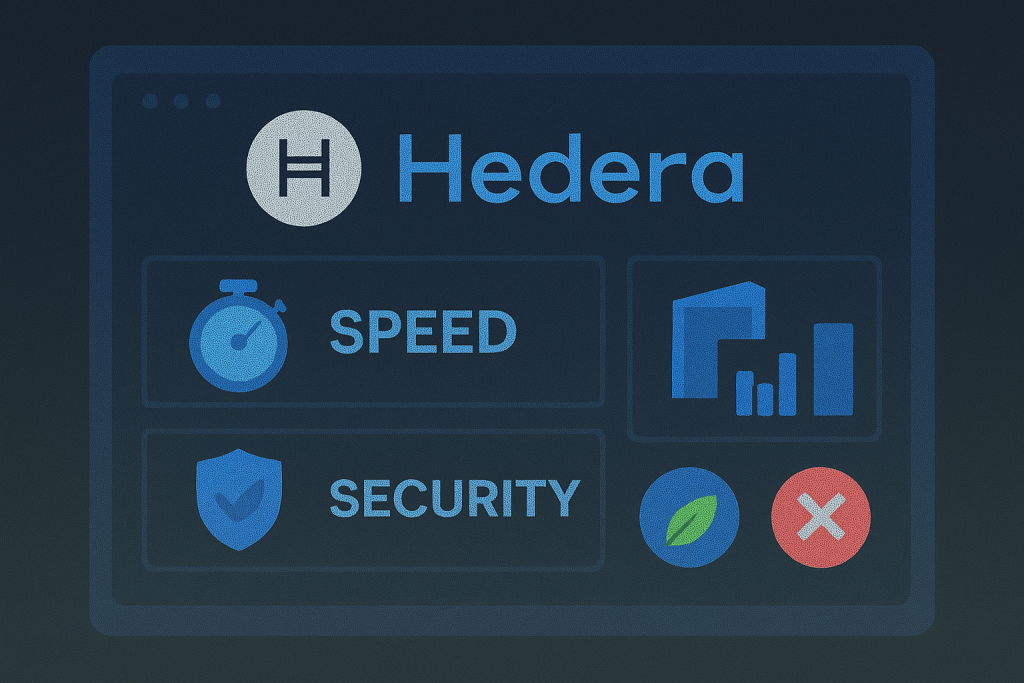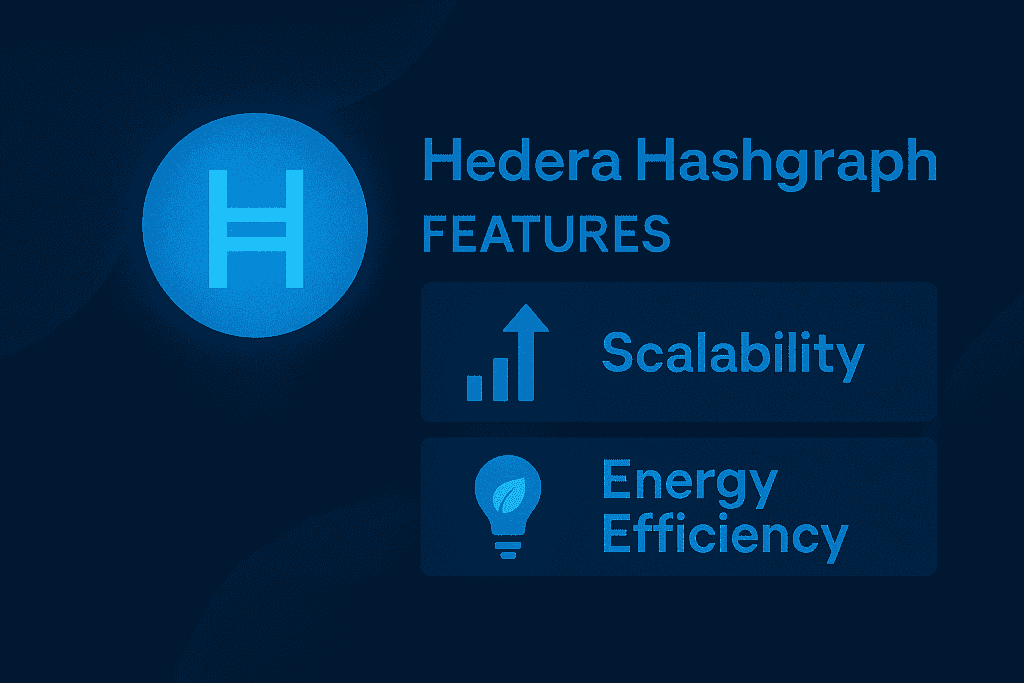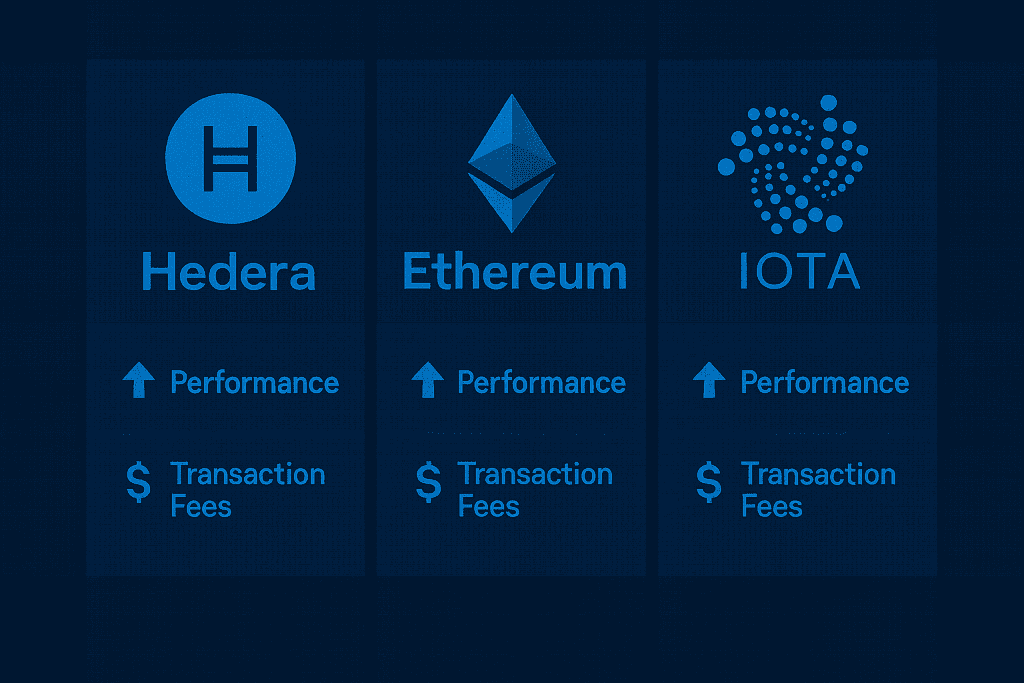
Blockchain technology has made waves in recent years, but have you ever wished it could be faster, more secure, and more energy-efficient? That’s where Hedera Hashgraph steps in. Hedera isn’t your typical blockchain; it’s a next-gen distributed ledger technology designed to overcome traditional blockchain limitations. Known for its unmatched speed, security, and low energy usage, it’s rapidly becoming a favorite in the crypto market.
In this review, we’ll explore Hedera Hashgraph’s features, pros and cons, and how it compares to other technologies. Whether you’re a blockchain enthusiast or a curious investor, this guide will provide the insights you need to understand if Hedera is right for you.
Overview of Hedera Hashgraph
Hedera Hashgraph is a distributed ledger technology that offers an alternative to traditional blockchain. Unlike blockchains, which use sequential blocks of data, it operates on a directed acyclic graph (DAG) structure. This innovation enables it to achieve unparalleled transaction speeds and efficiency.
This DLT solution stands out with its advanced features designed to improve the efficiency and reliability of distributed ledger technology. Its unique hashgraph consensus algorithm ensures faster and fairer consensus, making it ideal for applications requiring speed and accuracy. The platform boasts the capability to handle over 10,000 transactions per second, far exceeding the limitations of traditional blockchains like Bitcoin and Ethereum. Additionally, Hedera is highly energy-efficient, consuming a fraction of the power compared to energy-intensive proof-of-work systems. Its security is top-notch, relying on asynchronous Byzantine Fault Tolerance (aBFT) to ensure resilience against malicious actors and data manipulation. Governance is another standout feature, with a global council of leading organizations, including Google, IBM, and Boeing, overseeing the network to maintain trust and decentralization. Together, these features position Hedera as a leader in speed, security, and sustainability.
Hedera Hashgraph’s primary purpose is to support applications in finance, supply chain, gaming, and other industries where speed and scalability are critical.
Key Features of Hedera Hashgraph
Hedera sets itself apart with an impressive array of features that redefine distributed ledger technology. Here’s a closer look at what makes it unique:
- Lightning-Fast Transactions: Hedera can process over 10,000 transactions per second, far surpassing traditional blockchains like Bitcoin (7 TPS) and Ethereum (15-30 TPS). This makes it ideal for industries requiring high throughput, such as gaming and finance.
- Asynchronous Byzantine Fault Tolerance (aBFT): Hedera’s consensus mechanism ensures transactions are secure and resilient, even in the presence of malicious actors. This advanced security framework prevents double-spending and ensures data integrity.
- Energy Efficiency: Unlike traditional blockchains that consume massive energy, Hedera operates with a tiny environmental footprint. Its consensus algorithm doesn’t rely on mining, making it a greener alternative.
- Fairness in Transactions: The platform uses a unique gossip protocol to ensure that transactions are timestamped fairly, preventing manipulation or prioritization.
- Low Fees: Transaction fees on these are predictable and cost-effective, typically less than $0.001. This affordability makes it appealing for businesses and individuals alike.
- Global Governance: A council of leading enterprises like Google, IBM, and LG oversees Hedera’s governance, ensuring decentralization and trustworthiness. This diverse representation prevents any single entity from having undue influence over the network.
Hedera Hashgraph Pros and Cons
| Pros | Cons |
|---|---|
| Extremely fast transaction speeds | Limited adoption compared to Ethereum and Bitcoin |
| Low energy consumption and eco-friendly | Proprietary technology limits decentralization |
| Strong security with aBFT mechanism | Relies heavily on corporate governance |
| Predictable, low transaction fees | Limited developer tools compared to larger ecosystems |
| Scalable for enterprise applications | Not as well-known among general users |
In-Depth Analysis of Hedera Hashgraph

Hedera has set itself apart from traditional blockchain technologies by addressing issues like speed, scalability, and sustainability. Let’s dive deeper into its core aspects:
Performance and Scalability
Hedera Hashgraph’s speed is one of its standout features. With the ability to handle over 10,000 transactions per second, it’s leagues ahead of legacy blockchains. This speed ensures smooth operations for industries requiring high-frequency transactions, such as gaming and real-time data processing. Its scalability ensures that as user demand grows, the network continues to perform efficiently without bottlenecks.
Security
The network’s asynchronous Byzantine Fault Tolerance (aBFT) provides unmatched security, ensuring that even if some participants act maliciously, the system remains robust. This security framework is ideal for financial applications where trust is paramount.
Energy Efficiency
Hedera’s consensus mechanism is one of the greenest in the industry. Unlike Bitcoin’s energy-intensive proof-of-work system, Hedera operates without mining, significantly reducing its carbon footprint. This makes it an attractive choice for environmentally conscious businesses.
Governance Model
The global governance council ensures that no single entity has control over the network. With members like Google and IBM, Hedera benefits from credible oversight, but critics argue this corporate governance might reduce decentralization.
Hedera Hashgraph Comparison

Hedera competes with both traditional blockchains and DAG-based networks. Here’s how it stacks up:
| Feature | Hedera Hashgraph | Ethereum | IOTA |
|---|---|---|---|
| Transaction Speed | 10,000+ TPS | 15-30 TPS | 1,500+ TPS |
| Energy Efficiency | Highly efficient | Energy-intensive | Highly efficient |
| Governance | Corporate council | Decentralized nodes | Coordinator-dependent |
| Fees | $0.001 per transaction | Variable, higher gas fees | Zero fees |
While Ethereum has a larger developer ecosystem, Hedera Hashgraph excels in speed and energy efficiency, making it better suited for specific applications.
Conclusion
Hedera Hashgraph is a powerful alternative to traditional blockchains, offering unmatched speed, energy efficiency, and security. Its innovative approach to consensus and low-cost transactions make it a top choice for enterprises seeking scalable solutions. However, its corporate governance model and relatively low adoption rate may deter some users.
If you’re looking for a sustainable, high-performance platform for business or personal use, this Hashgraph is worth exploring. Its combination of advanced technology and eco-friendliness positions it as a leader in the future of distributed ledger technology.
Hedera Hashgraph Rating
Hedera Hashgraph earns a 4.5 out of 5 stars for its revolutionary speed, security, and scalability. While its governance model and developer ecosystem have room for growth, it remains a standout platform for high-performance applications.
FAQ
What makes Hedera Hashgraph faster than traditional blockchains?
Hedera Hashgraph uses a directed acyclic graph (DAG) structure and gossip protocol, enabling it to handle over 10,000 transactions per second. Its unique design eliminates the bottlenecks faced by traditional blockchains.
Is Hedera Hashgraph more eco-friendly than Bitcoin?
Yes, Hedera Hashgraph consumes significantly less energy because it doesn’t rely on mining. Its consensus algorithm is energy-efficient, making it one of the most sustainable distributed ledger technologies available.
Who governs Hedera Hashgraph?
Hedera Hashgraph is governed by a global council of enterprises, including Google, IBM, and LG. This model ensures stability and trust but raises concerns about decentralization.
Resources
- BlockTech Buzz. Hedera Hashgraph: Revolutionizing Distributed Ledger Technology
- DigiMagg. Hedera Hashgraph Review
- CryptoVantage. Hedera Hashgraph Overview
- UMA Technology. What is Hedera Hashgraph and How Does It Work?
- Coin Bureau. Hedera Hashgraph HBAR Review
